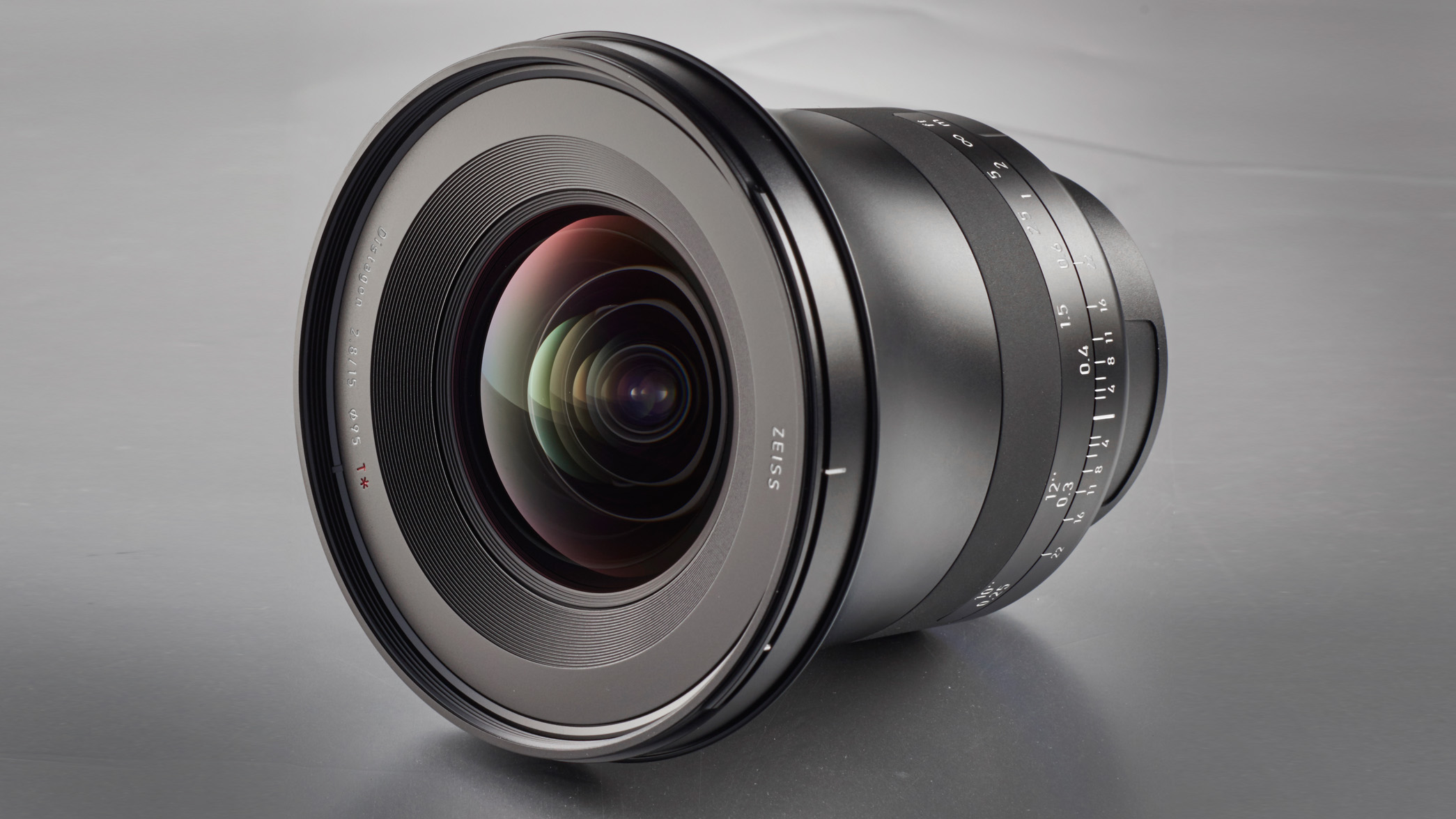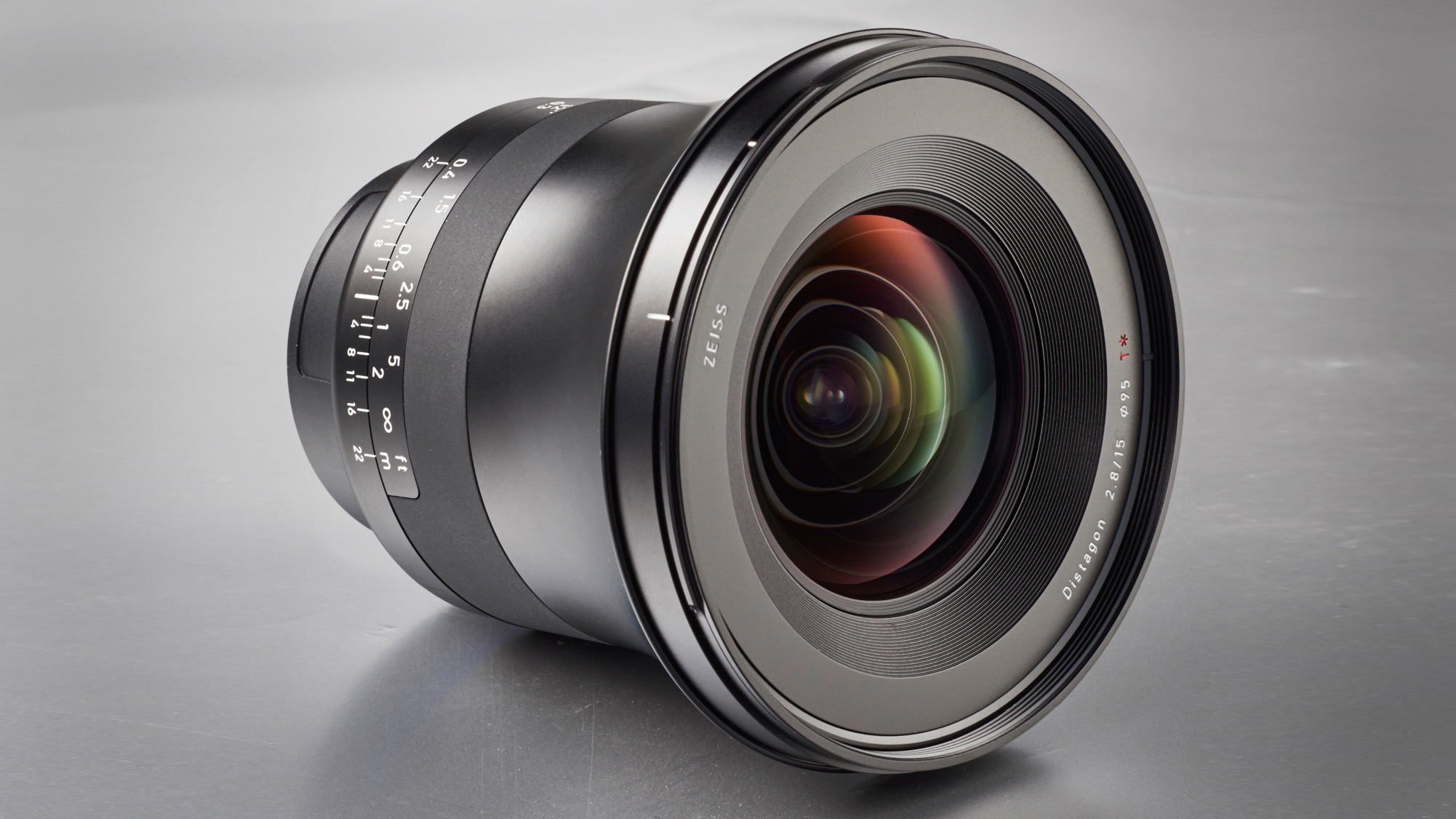Digital Camera World Verdict
I feel that sometimes bigger really is better, and the Zeiss Milvus 15mm F2.8 certainly delivers in terms of an oversized viewing angle. I love the way it can shoehorn vast landscape vistas into the image frame and that it works similarly well for architectural interiors and even for astrophotography. Build quality, handling and performance are all exceptional but it lacks autofocus and comes at a very steep purchase price.
Pros
- +
Superb image quality
- +
Great build and handling
- +
Fast aperture
- +
Removable hood
Cons
- -
No autofocus
- -
Large 95mm filter thread
- -
Massively expensive
Why you can trust Digital Camera World
The Zeiss Milvus 15mm f/2.8 follows suit with various other families of Zeiss lenses, like the Batis and Loxia (for Sony E-mount cameras), in that it’s named after a bird. This time around, instead of being a sub-Saharan flycatcher or a stocky finch, Milvus takes its name from the red kite, a bird of prey. That sounds like a more high-performance and impressive deal from the get-go. It’s worth bearing in mind though that, in my neck of the woods, the red kite went extinct for about 100 years before being so successfully being reintroduced to the UK. I have to wonder if the writing is also on the wall for DSLR lenses, with so much of the world going mirrorless. Either way, the Milvus 15mm ultra-wide-angle, full-frame compatible lens is still available in ZE and ZF.2 options, for Canon and Nikon DSLRs respectively. In fact, these manual-focus lenses arguably work even better on Canon and Nikon mirrorless cameras via the respective companies’ mount adapters, where focusing aids like magnified preview and focus peaking come into play.
Specifications
| Mount options | Canon EF, Nikon F |
| Lens construction | 15 elements in 12 groups |
| Angle of view | 110 degrees |
| Focus type | Manual focus |
| Minimum aperture | f/22 |
| Minimum focus distance | 0.25m |
| Maximum magnification | 0.11x |
| Filter size | 95mm |
| Dimensions | 102x100mm |
| Weight | 947g (EF) 880g (F) |
Key features
This Zeiss Milvus lens has two key features as far as I’m concerned. First is its ultra-wide 15mm focal length, delivering a mighty 100-degree viewing angle. As an ultra-wide lens, it’s great for sweeping landscape vistas, cityscapes, architectural interiors and simply for exaggerating the perspective between foreground and background areas of a scene. Indeed, with a short minimum focus distance of just 0.25m (9cm or 3.5 inches from the front of the lens), you certainly can get in close.
The second major attraction is the fairly fast f/2.8 aperture rating. That comes in useful for maintaining quick shutter speeds for freezing motion even under dull lighting conditions, as well as enabling a fairly tight depth of field if needed, when shooting extreme close-ups. It also adds astrophotography to the remit of the lens.
A glaring omission from the feature set, at least for many digital photographers, is that there’s no autofocus. Many of us have come to rely almost entirely on autofocus since the 1970s, and the lack of it can seem a real challenge. But hang on a minute. At regular focus distance and medium aperture settings, the depth of field of a 15mm lens is huge, so ultra-precise, pinpoint focusing is largely unnecessary. As it turns out, the long throw of 119 degrees for the focus control ring enables very fine adjustments, and the silky-smooth action gives a really fluid feel.
And there’s more. The long throw of the focus ring enables a genuinely useful focus distance scale, complete with depth of field markers for all full f/stop intervals from f/2.8 right through to f/22. This enables effective ‘zone focusing’, so you can set the near and far limits covered by the depth of field for any focus distance and aperture combination. On top of that, while there’s no split screen or microprism in the viewfinders of DSLRs, there’s a focus confirmation lamp in Canon cameras and the additional benefit of focus direction lamps in Nikon cameras. Those are enabled thanks to the lens having an integral CPU and full electronic communication with the host camera body.
All in all, the lack of autofocus needn’t be a deal-breaker. And if you use an EOS R-system or Nikon Z-system mirrorless camera, the lens is fully compatible via EF-EOS R and FTZ mount adapters respectively. A bonus in both cases is that you can take advantage of magnified preview in the viewfinder or rear screen, and the option of focus peaking to help with accurate focusing.
Many ultra-wide-angle lenses have an integral hood that precludes the easy use of filters. I like that the Milvus 15mm has separate petal-shaped, bayonet-fit hood, enabling the inclusion of a filter attachment thread. A downside, however, is that the filter thread is unusually large at 95mm.
A bonus for video shooting, at least with the Nikon F-mount version of the lens, is that the aperture ring comes complete with a click/de-click option. That’s sadly lacking in the Canon edition. Both versions of the lens are epically well built, with an black anodized metal barrel and comprehensive weather-seals. And unlike many ‘metal lenses’, this one has a rubberized focus control ring which feels more tactile and less cold to the touch in chilly weather.
Performance
The lens is designed on classic Zeiss Distagon principles. As such, it has a retrofocus design that aims for optical excellence right out to the edges of the image frame, with effective correction of aberrations and very low field curvature. The complex optical path contains 15 elements which include two aspherical elements and five low dispersion elements, the latter to boost sharpness and clarity while reducing color fringing. Zeiss’s legendary T* Anti-Reflective Coating is applied to minimize ghosting and flare, and to boost contrast. To further this, the edges of all the optical elements are manually coated with pitch-black lacquer light traps are built into mechanical components to combat internal reflections.
Center-sharpness is excellent, even when shooting wide-open at f/2.8. As I’d expect, it pays to stop down to apertures of between f/5.6 and f/11 for enhancing sharpness towards the extreme edges and corners of the frame.
Lab results
We run a range of lab tests under controlled conditions, using the Imatest Master testing suite. Photos of test charts are taken across the range of apertures and zooms (where available), then analyzed for sharpness, distortion and chromatic aberrations.
We use Imatest SFR (spatial frequency response) charts and analysis software to plot lens resolution at the center of the image frame, corners and mid-point distances, across the range of aperture settings and, with zoom lenses, at four different focal lengths. The tests also measure distortion and color fringing (chromatic aberration).
Sharpness:
Surprisingly, the lens delivers its best center-sharpness at the very widest aperture of f/2.8, but it remains excellent all the way down to f/11. Edge/corner-sharpness comes on song at f/5.6 and remains impressive through to f/11.
Fringing:
There’s only minimal color fringing across most of the image frame, throughout the entire aperture range. It can be a little visible towards the extreme edges and corners of the frame but is still very well controlled.
The best camera deals, reviews, product advice, and unmissable photography news, direct to your inbox!
Distortion: -2.15
Barrel distortion is of a low order for such an ultra-wide-angle lens. For critical scenarios, like in architectural photography, the uniform nature of the distortion makes it easy to correct at the editing stage.
Verdict
I feel that sometimes bigger really is better, and the Zeiss Milvus 15mm F2.8 certainly delivers in terms of an oversized viewing angle. I love the way it can shoehorn vast landscape vistas into the image frame and that it works similarly well for architectural interiors and even for astrophotography. Build quality, handling and performance are all exceptional but it lacks autofocus and comes at a very steep purchase price.
- Other Zeiss Milvus lens reviews
- Zeiss Milvus 35mm f/2 review
- Zeiss Milvus 50mm f/1.4 ZE review
- Zeiss Milvus 18mm f/2.8 review
- Zeiss Milvus 21mm f/2.8 review
Matthew Richards is a photographer and journalist who has spent years using and reviewing all manner of photo gear. He is Digital Camera World's principal lens reviewer – and has tested more primes and zooms than most people have had hot dinners!
His expertise with equipment doesn’t end there, though. He is also an encyclopedia when it comes to all manner of cameras, camera holsters and bags, flashguns, tripods and heads, printers, papers and inks, and just about anything imaging-related.
In an earlier life he was a broadcast engineer at the BBC, as well as a former editor of PC Guide.









